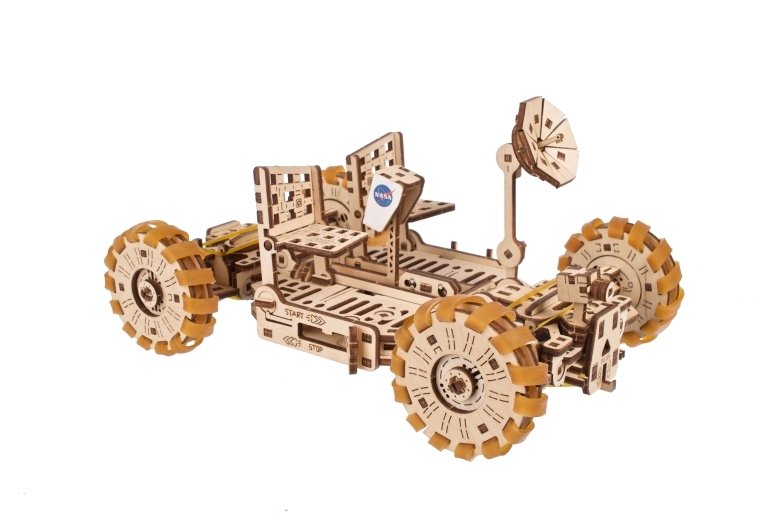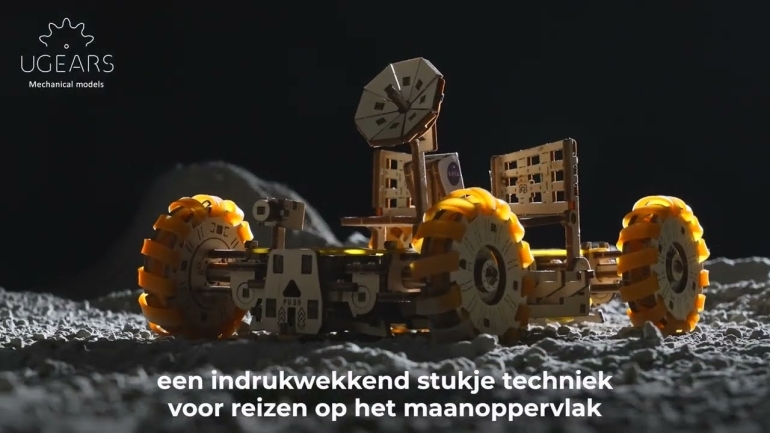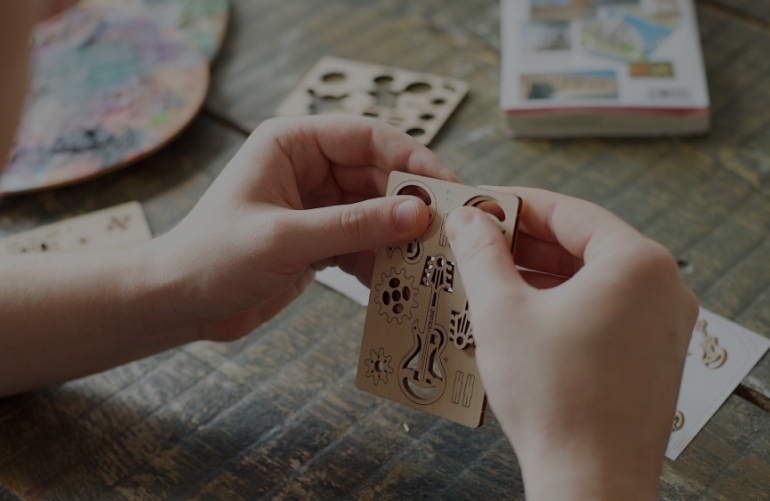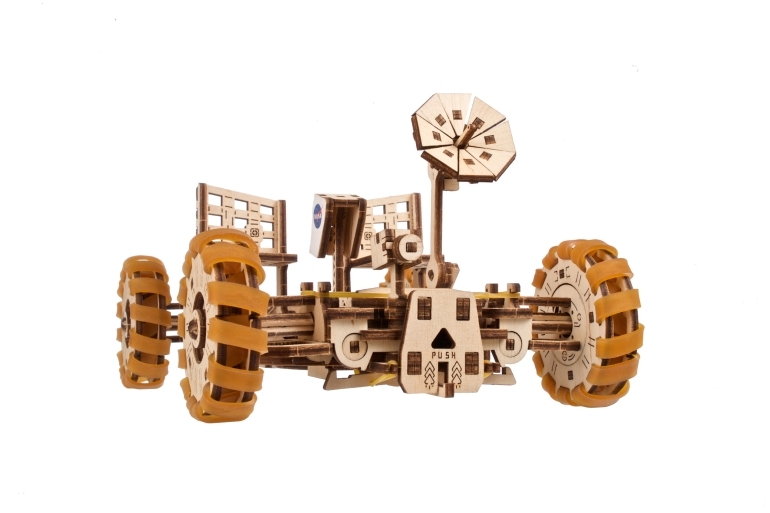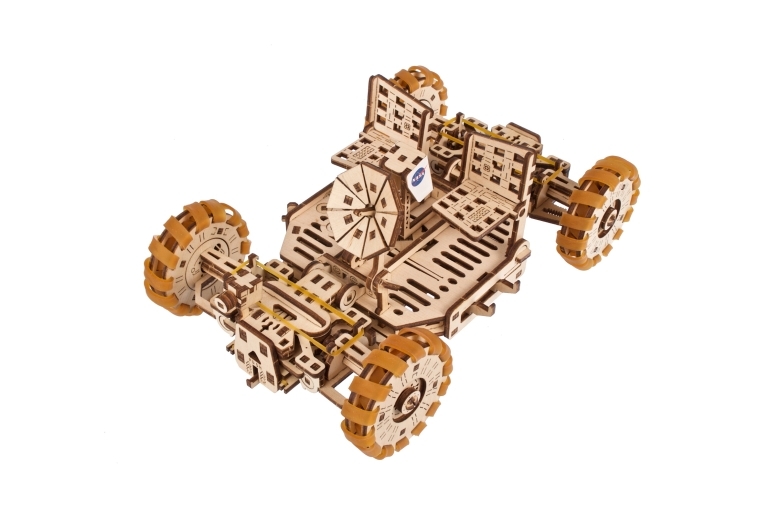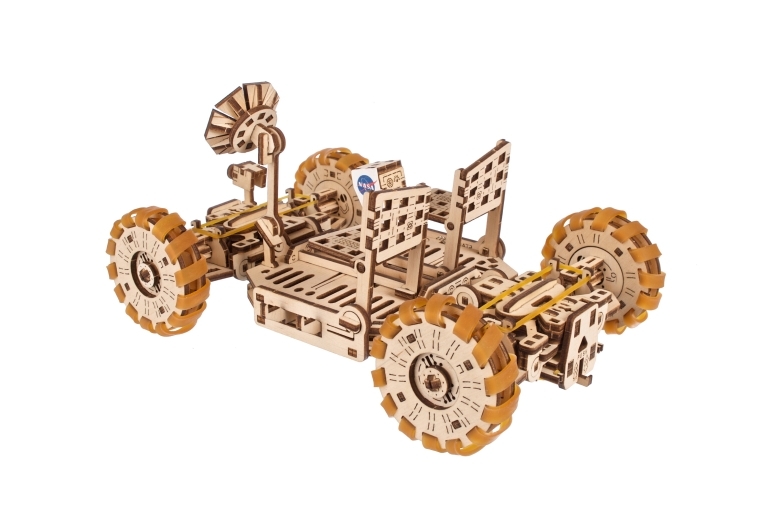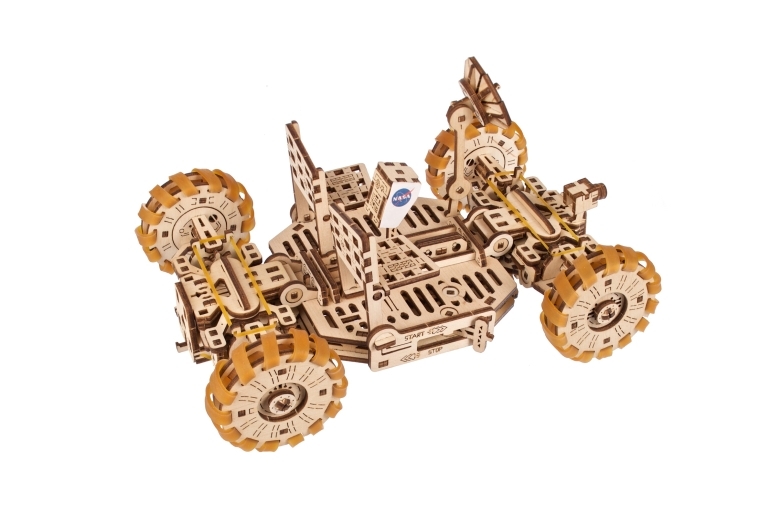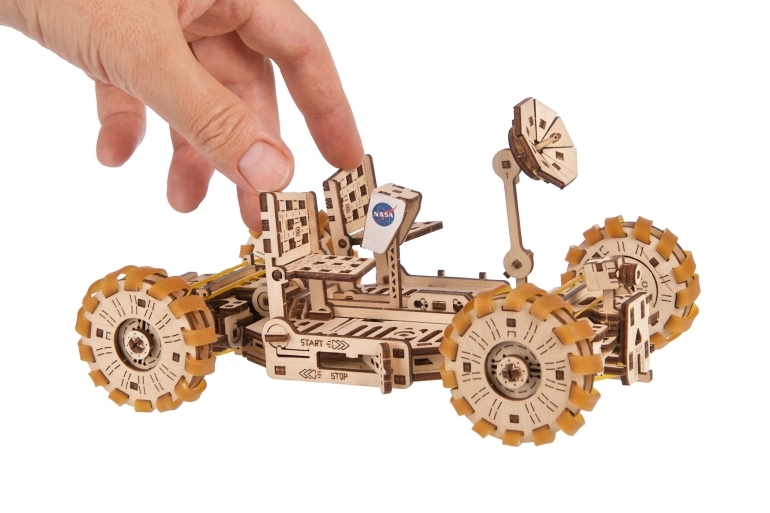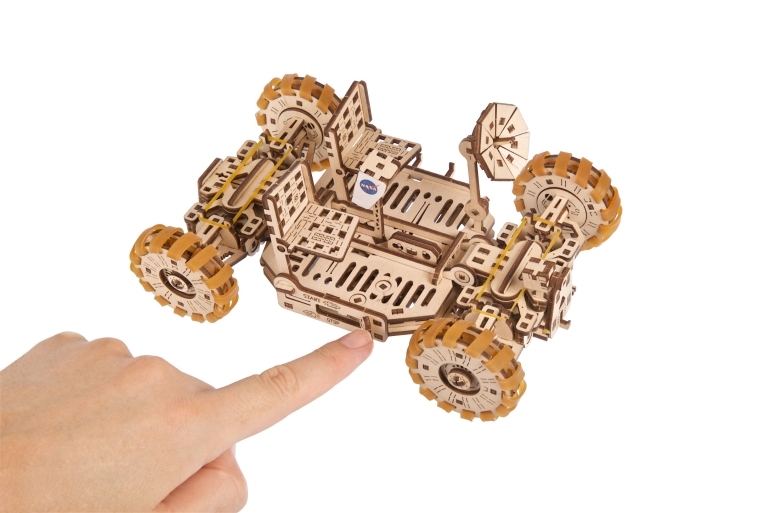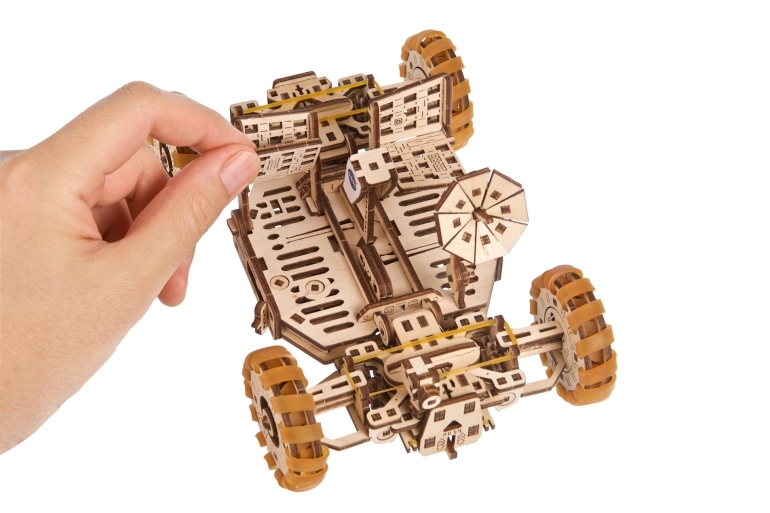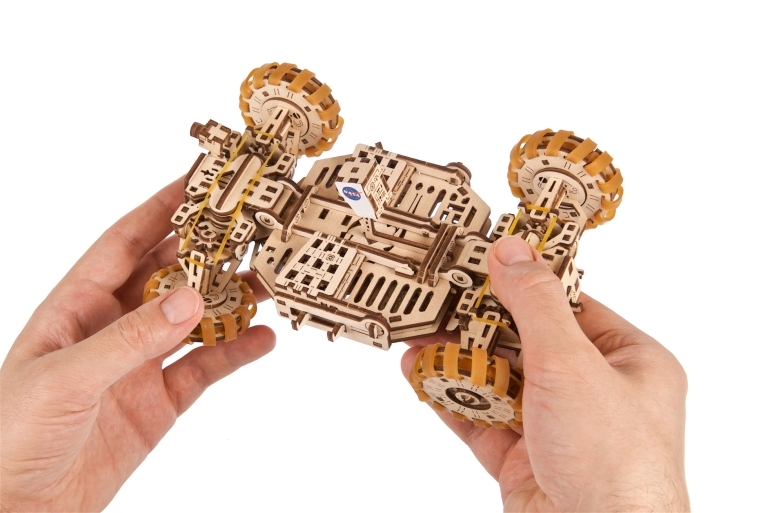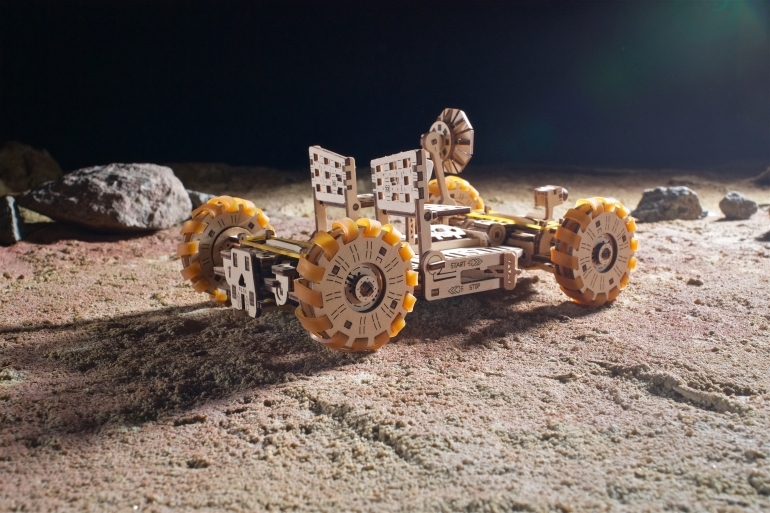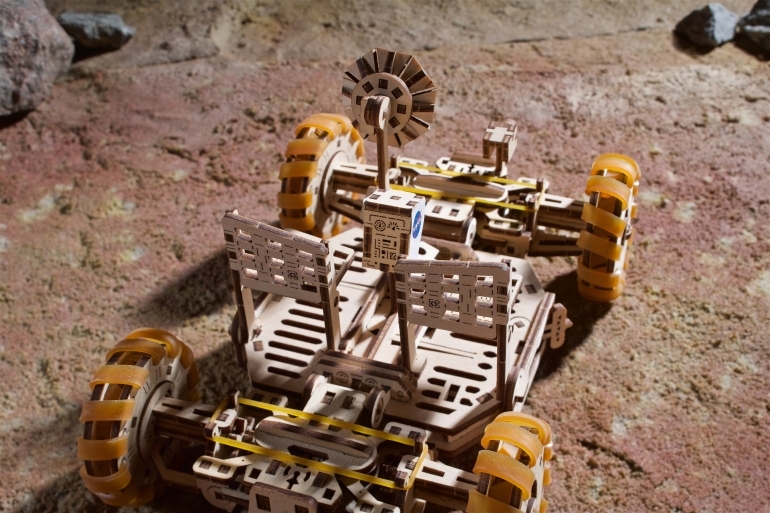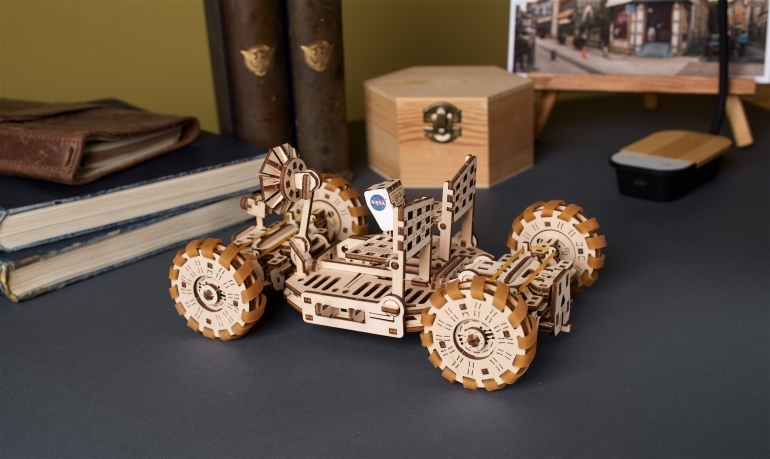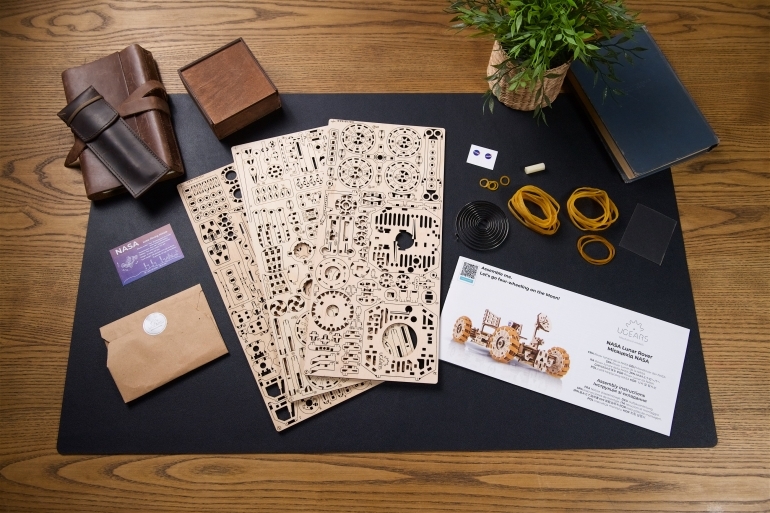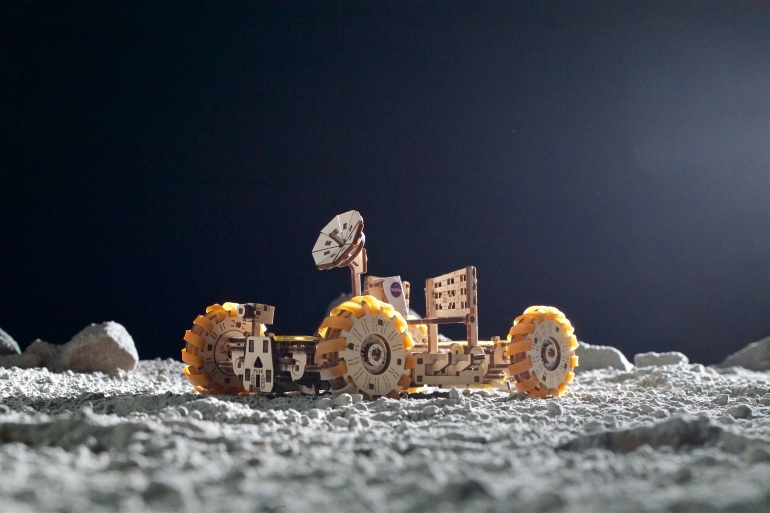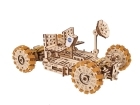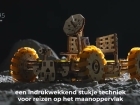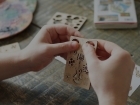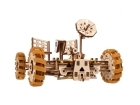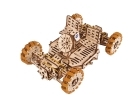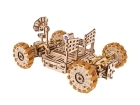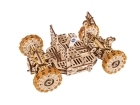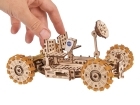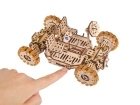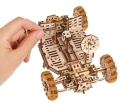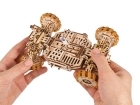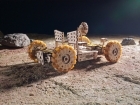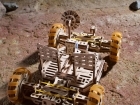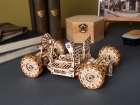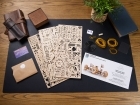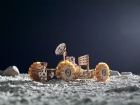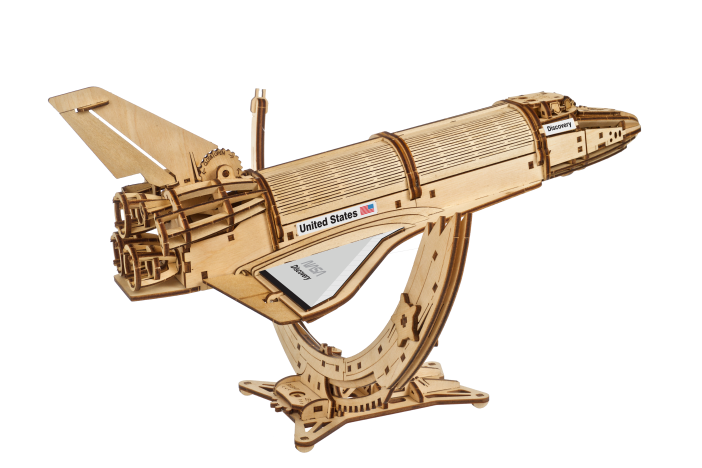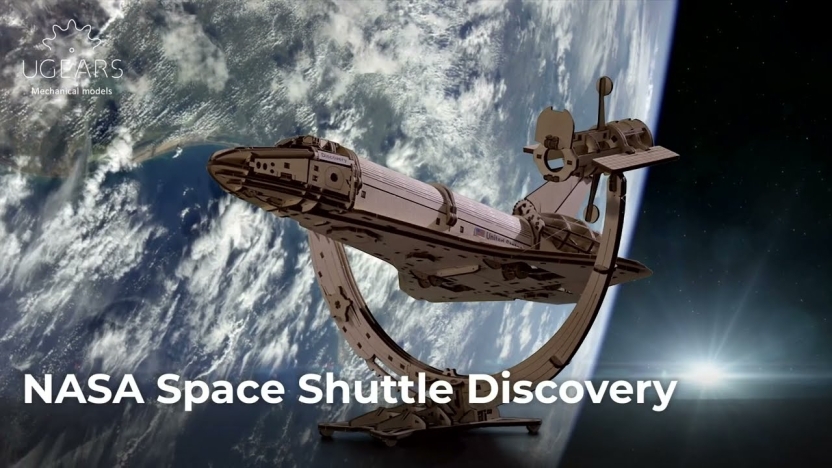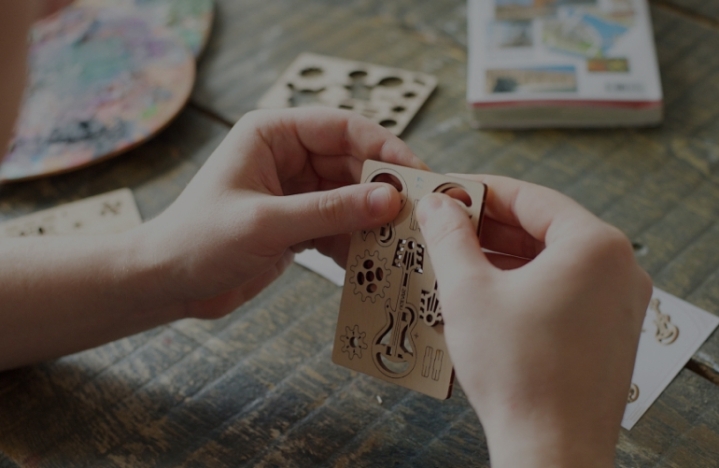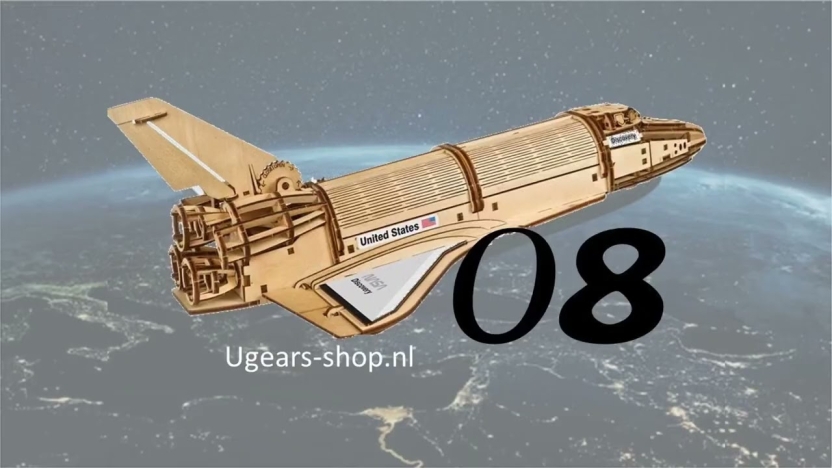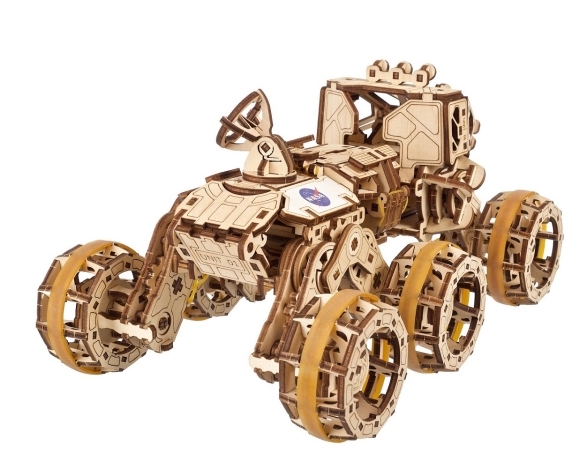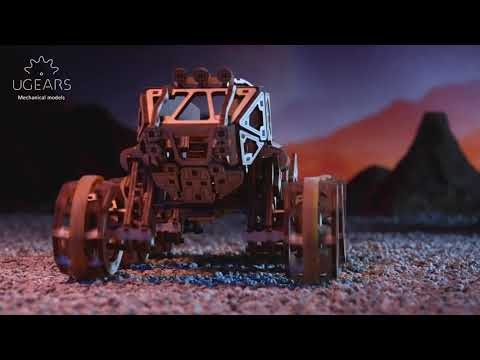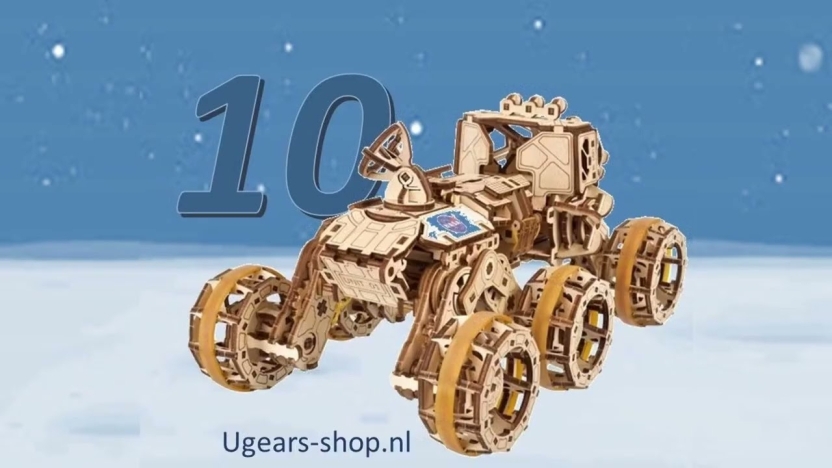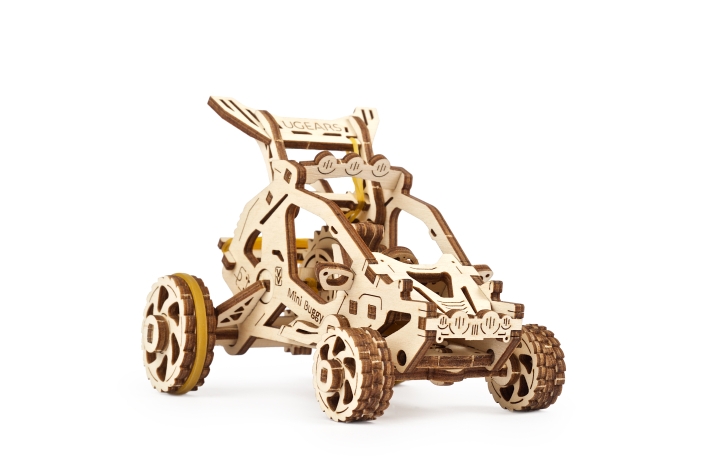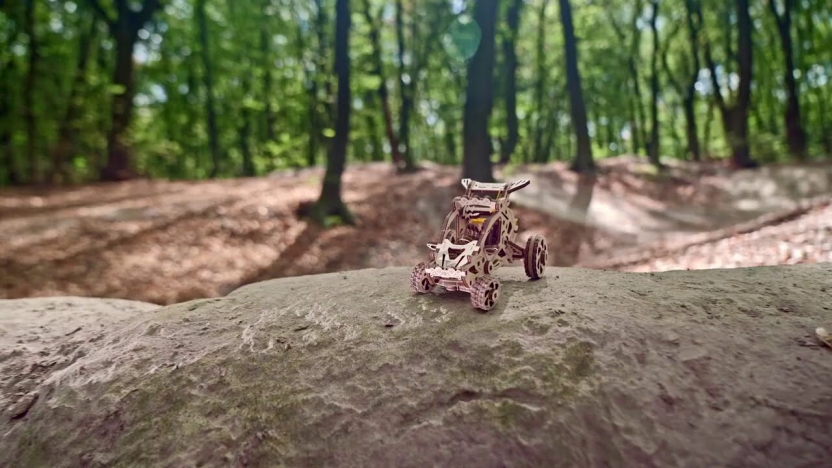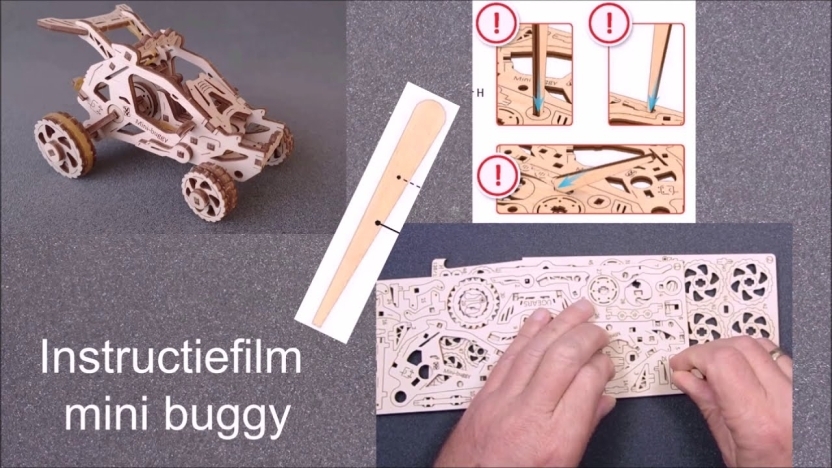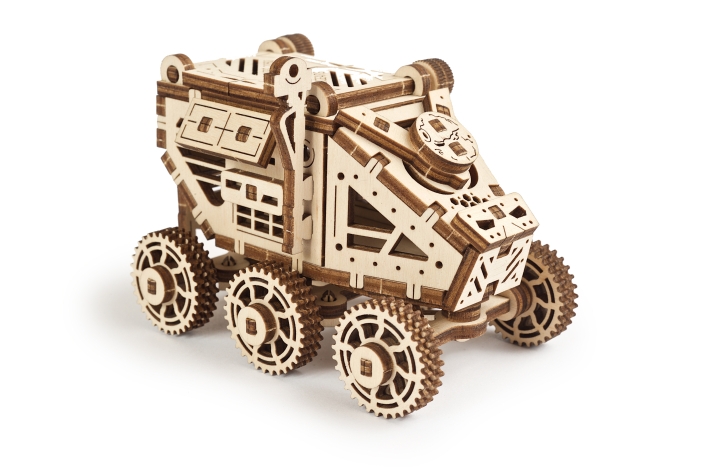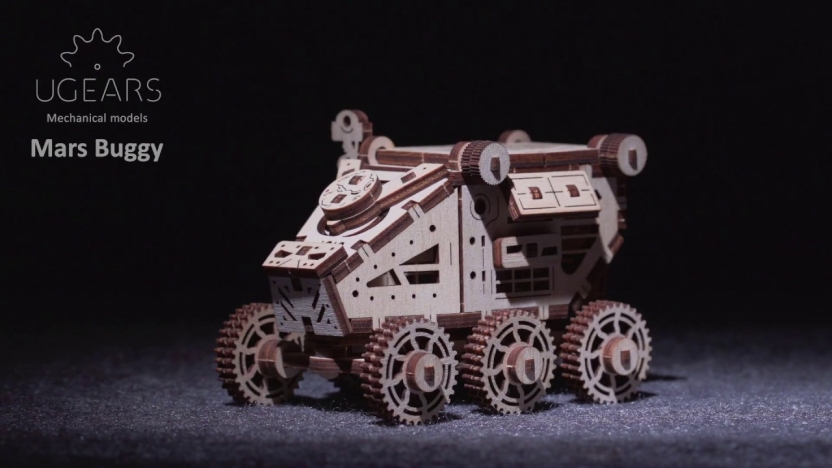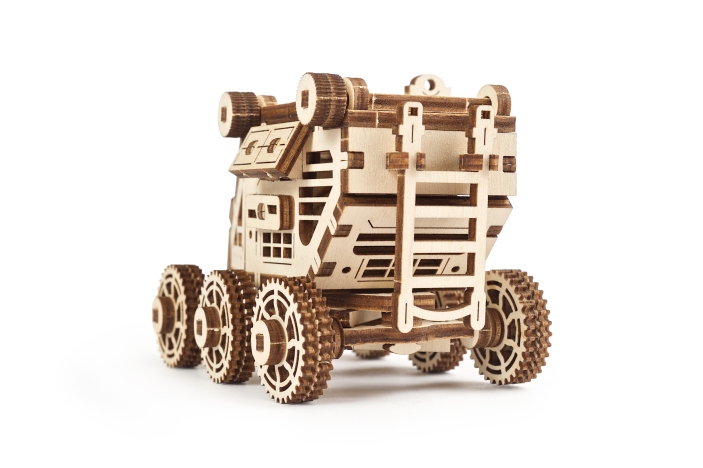NEW NASA Lunar Rover
- Description
- Reviews
- Specifications
Rubber bands in these models are used only for decoration, provide a realistic appearance of the bands and are not involved in the mechanism.
Two things about our species: people love to explore, and people love cars! After Neil Armstrong first set foot on the moon (Apollo 11, July 21, 1969) it was only two short years before NASA sent a car with astronauts David Scott and James Irwin (Apollo 15, July 31, 1971) so they could drive, not walk, around the lunar surface. The most scientifically interesting moon rocks would not have been collected without the greater range of exploration permitted by the LRV ("Lunar Roving Vehicle"). The LRV was an impressive piece of engineering, having to bear twice its 209 kg weight, withstand micrometeoroids traveling faster than bullets, and reliably operate in 500° F temperature swings. On the Apollo 17 mission the rover went 22.3 miles in 4 hours 26 minutes of drive time, although the longest distance from the lunar module was only 4.7 miles as the astronauts had to be able to walk back to their landing craft in case of a breakdown. To this day, three LRVs remain in long-term parking on the lunar surface.
Ugears celebrates our collective love affair with cars and exploration with the NASA Lunar Rover, an amazing model "moon buggy" that closely resembles the LRV in its design. This spring-driven 1:15 scale wooden model features rotating and pivoting wheels, a dish antenna, front-mounted camera, and a sophisticated mechanism for folding the rover into a more compact form for transport on a rocketship, just like the original. As you unfold the wheel sections of this dynamic transformer you'll be surprised as the axles quickly snap into place and the wheels, with their rubber treads, automatically pop into position! A hidden key located underneath the chassis is used to wind the ratchet mechanism, while a Start/Stop switch allows you to wind then release your Rover to travel distances up to 3m.
The Ugears NASA Lunar Rover also features twin folding seats for the astronauts, a dish antenna that can be folded and stored on the side of the Rover or deployed using a slot at the front left of the cab, and a model camera arm that can be placed at the front of the vehicle, so that mission control can see and record your adventures! Engraving on the rover and its wheels represent all the electric wires on the original LRVs, while cut-outs and other design touches throughout the model make the Rover more lightweight and add to its realistic look and feel.

